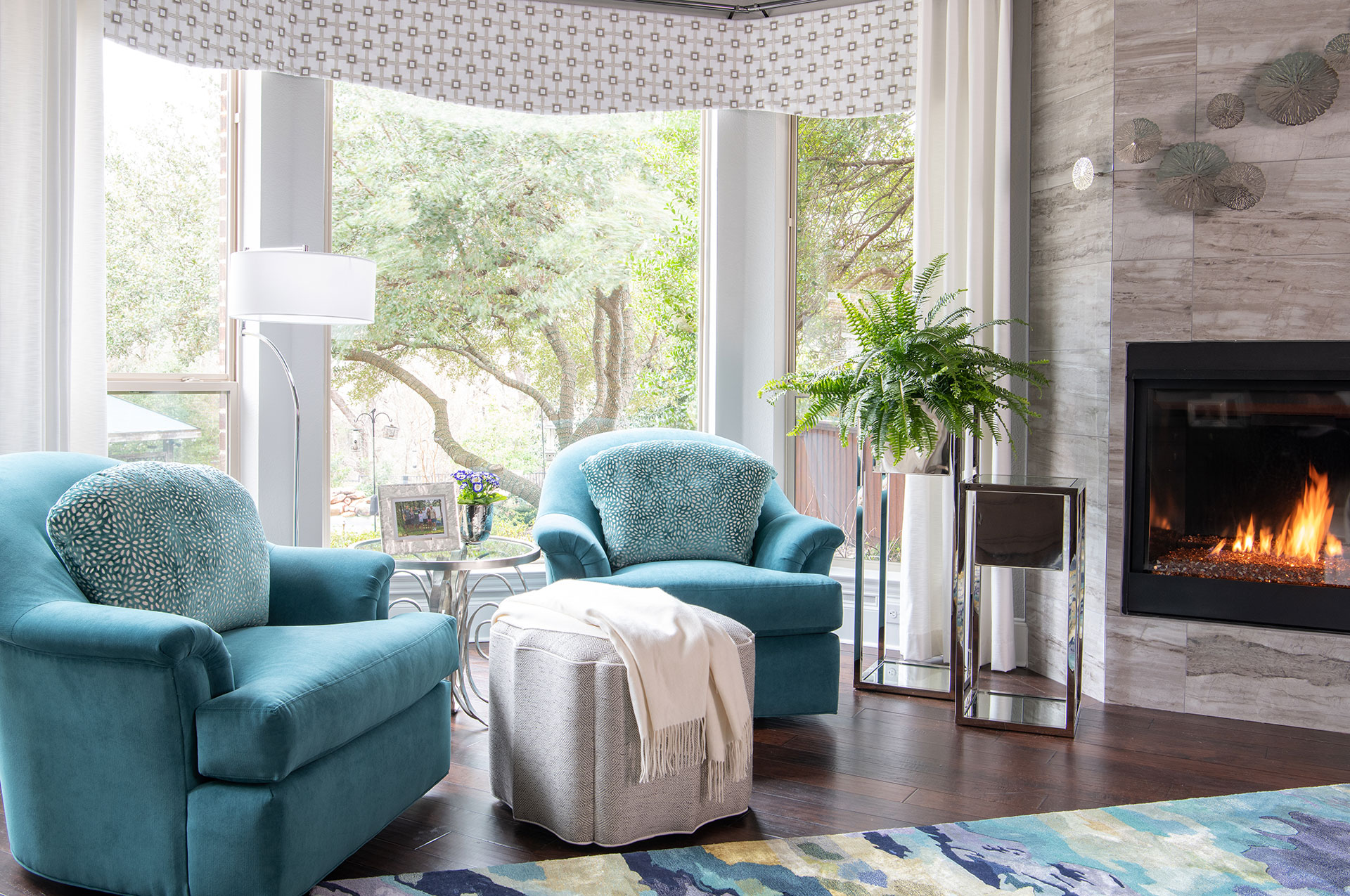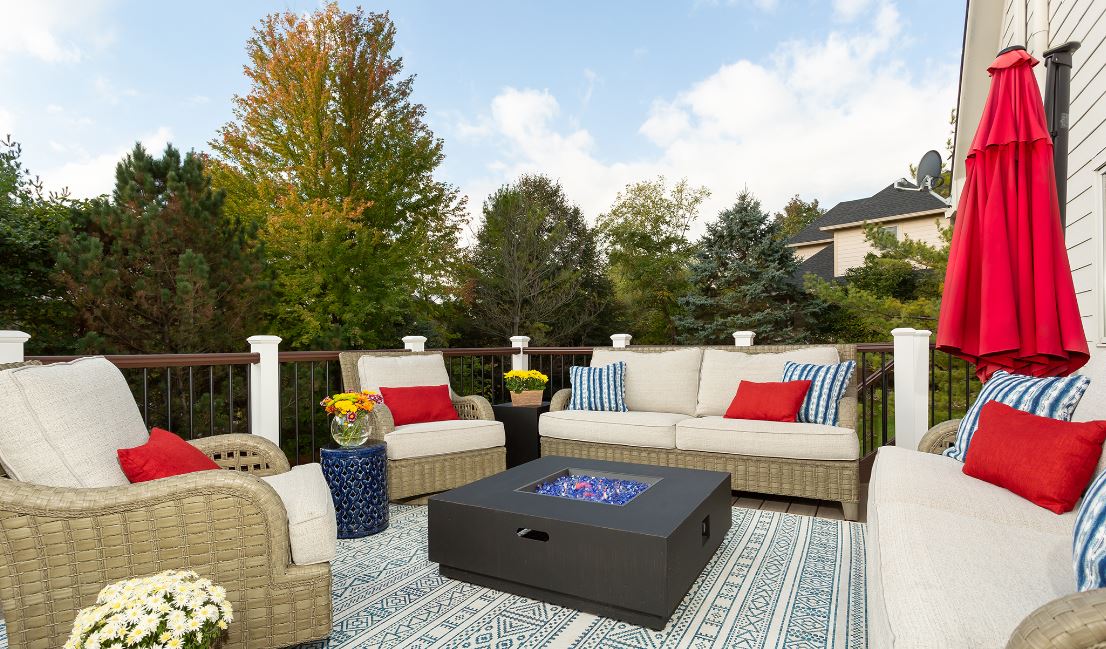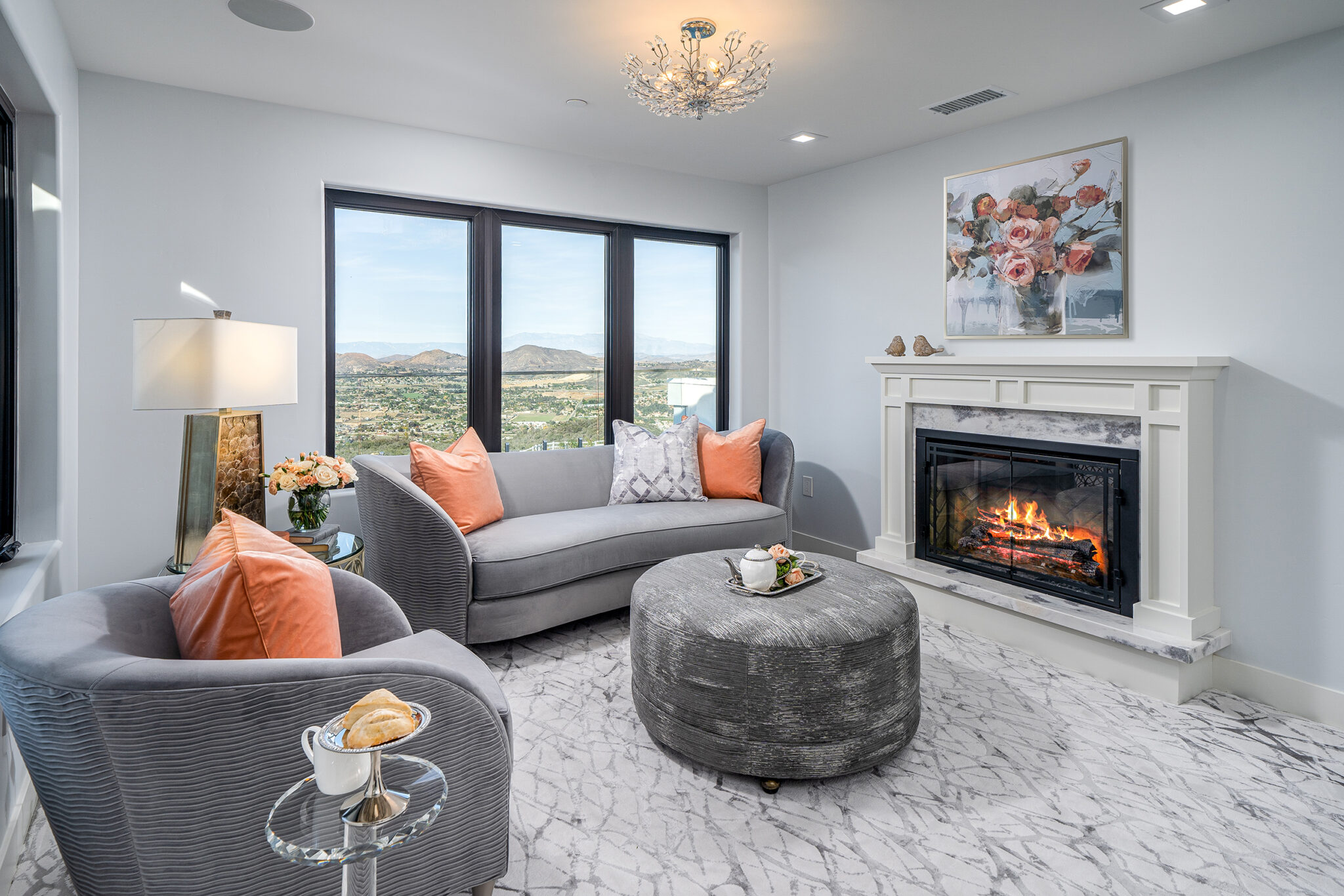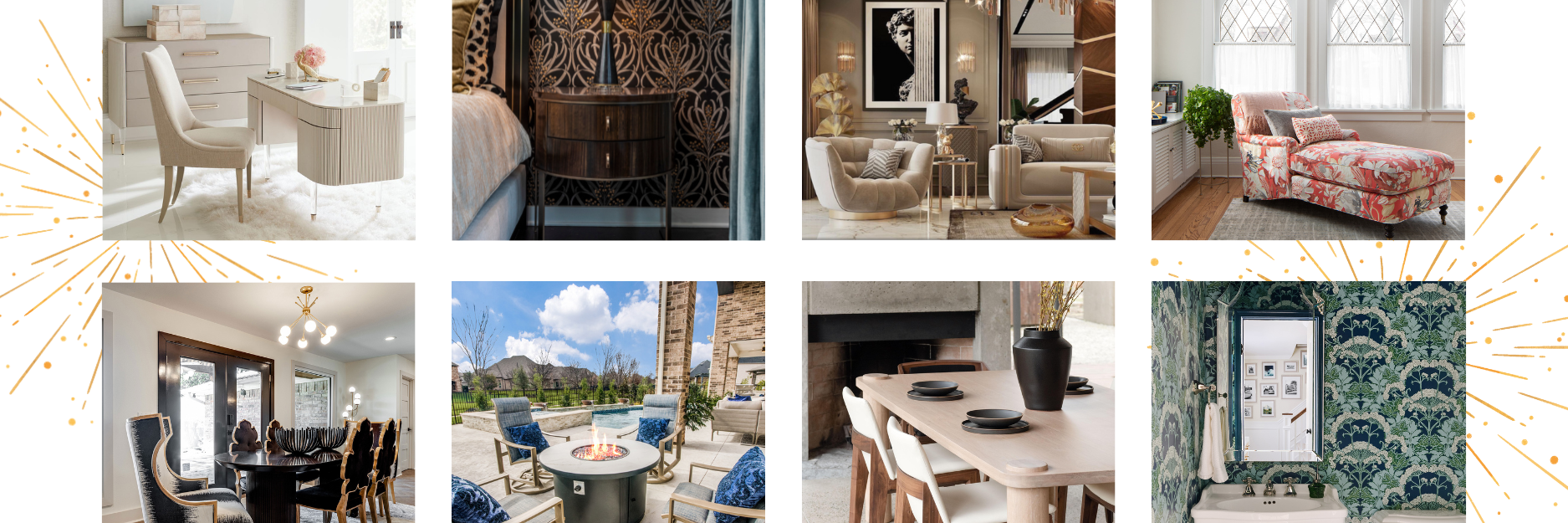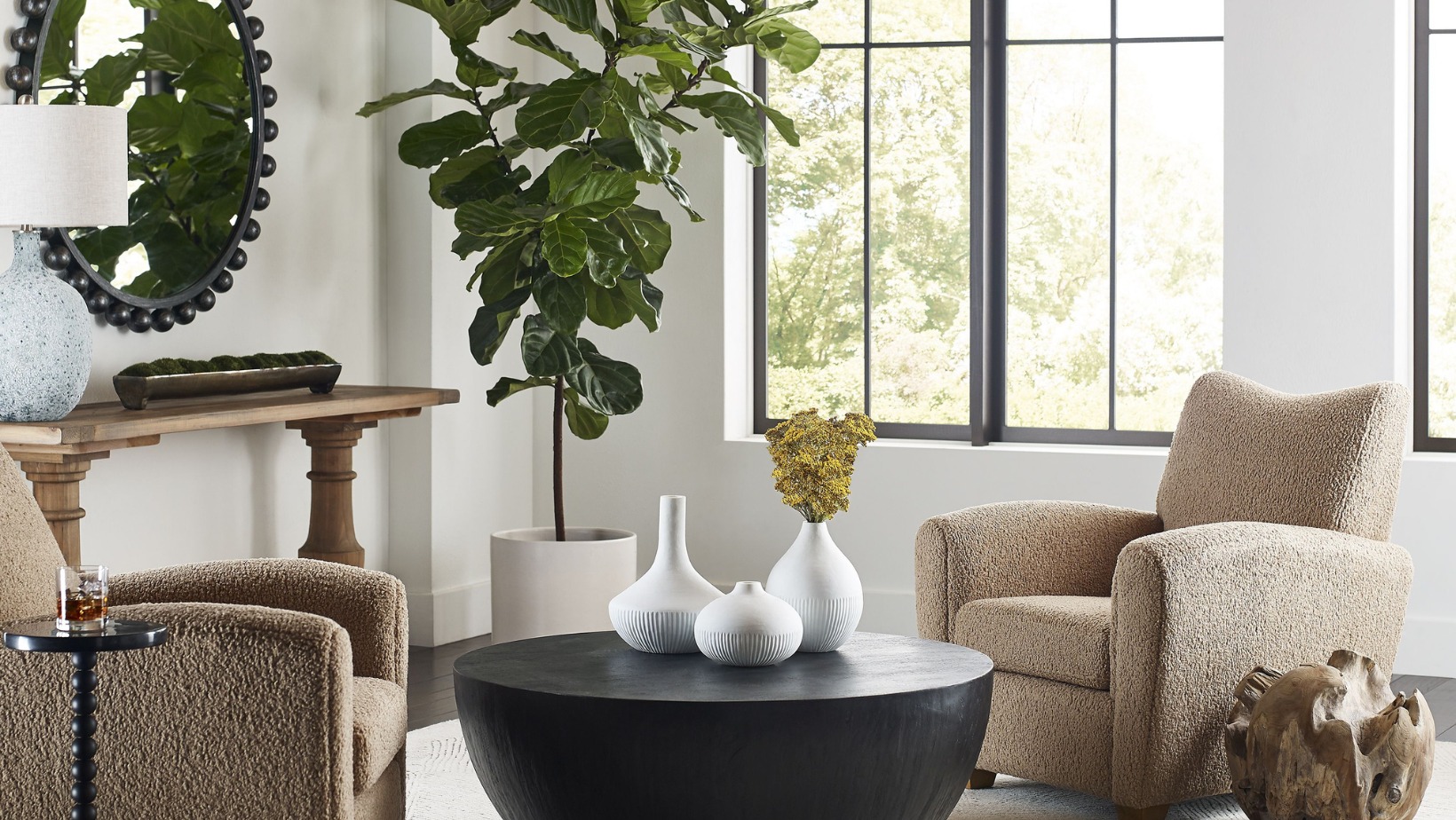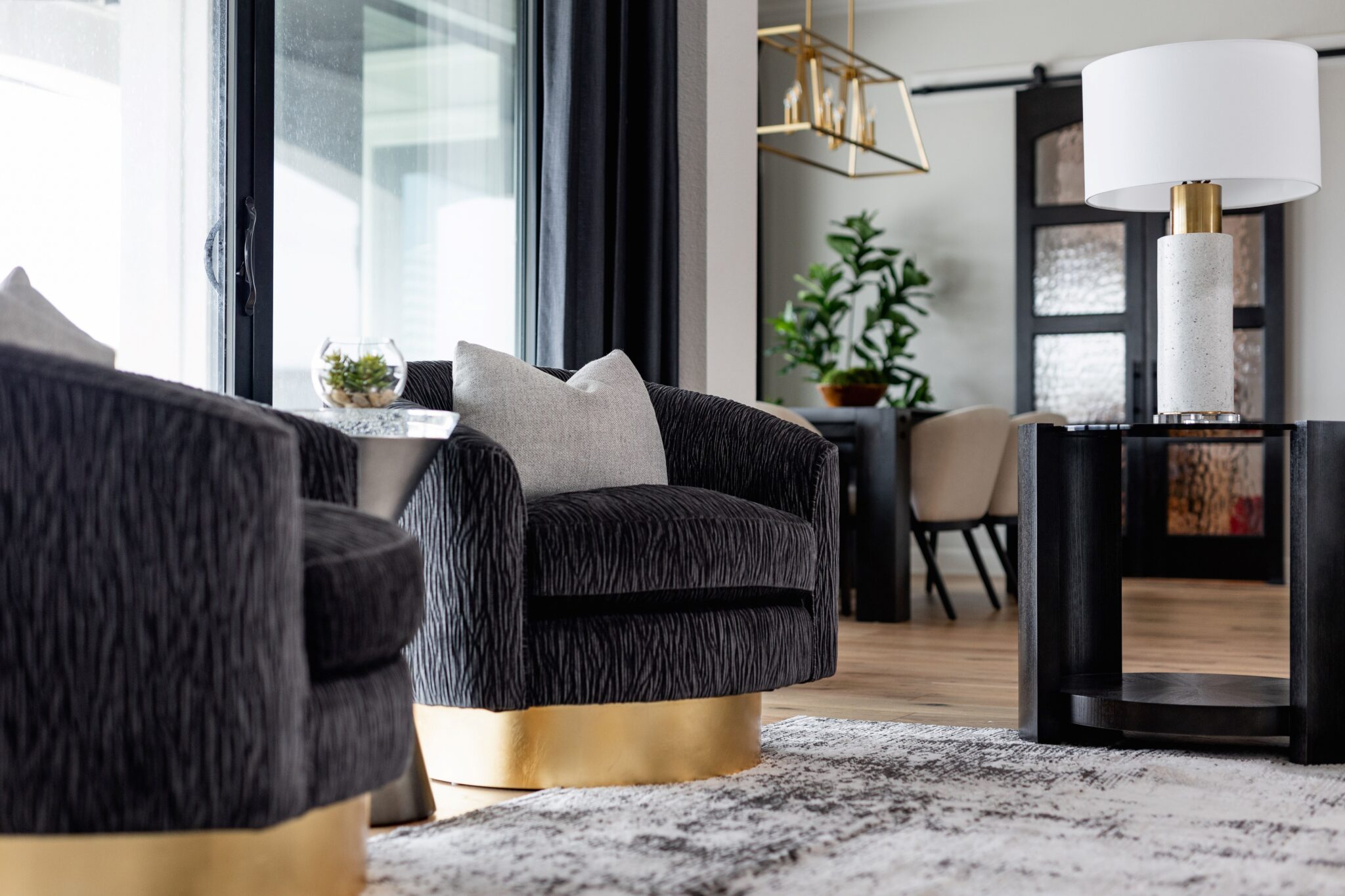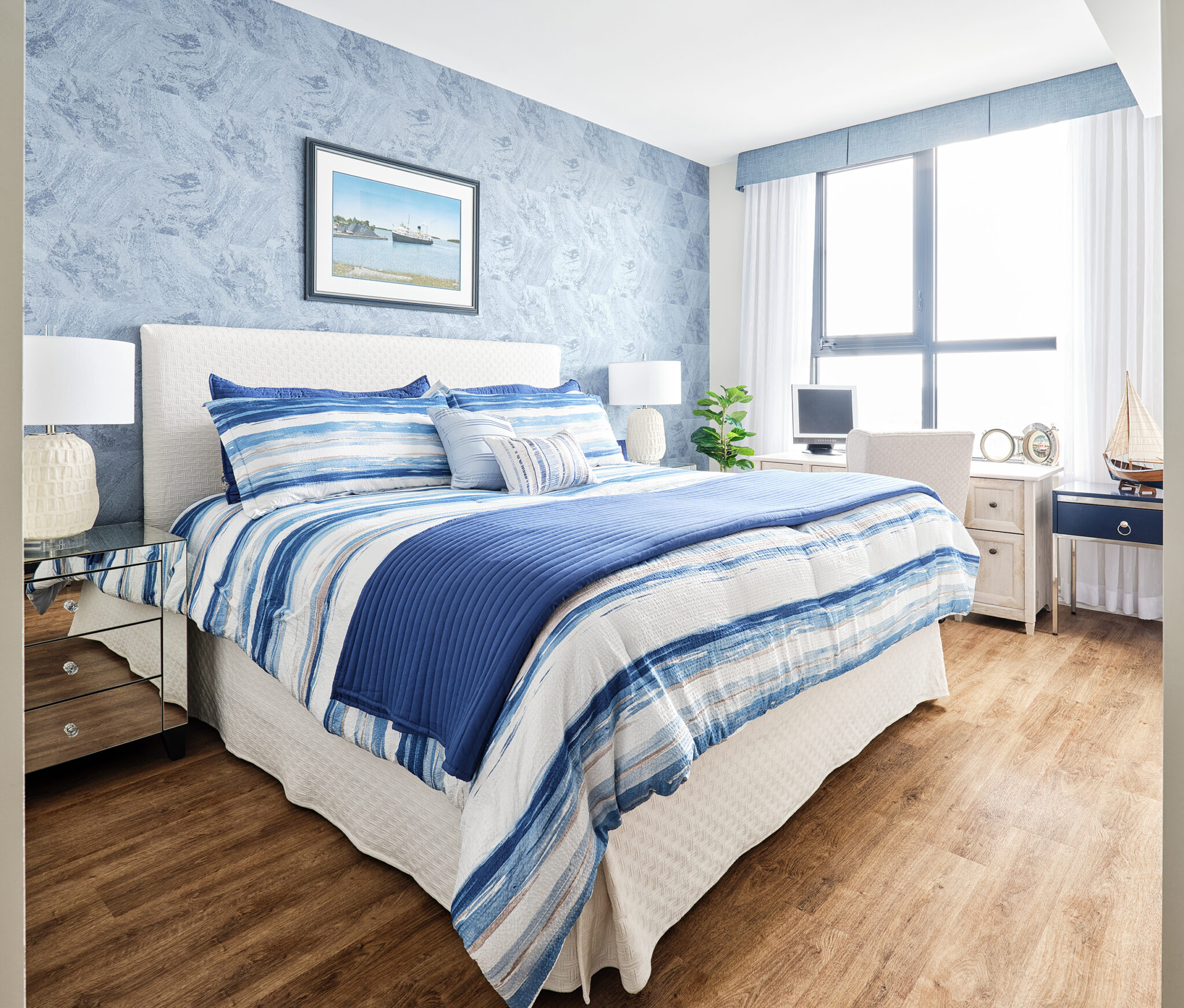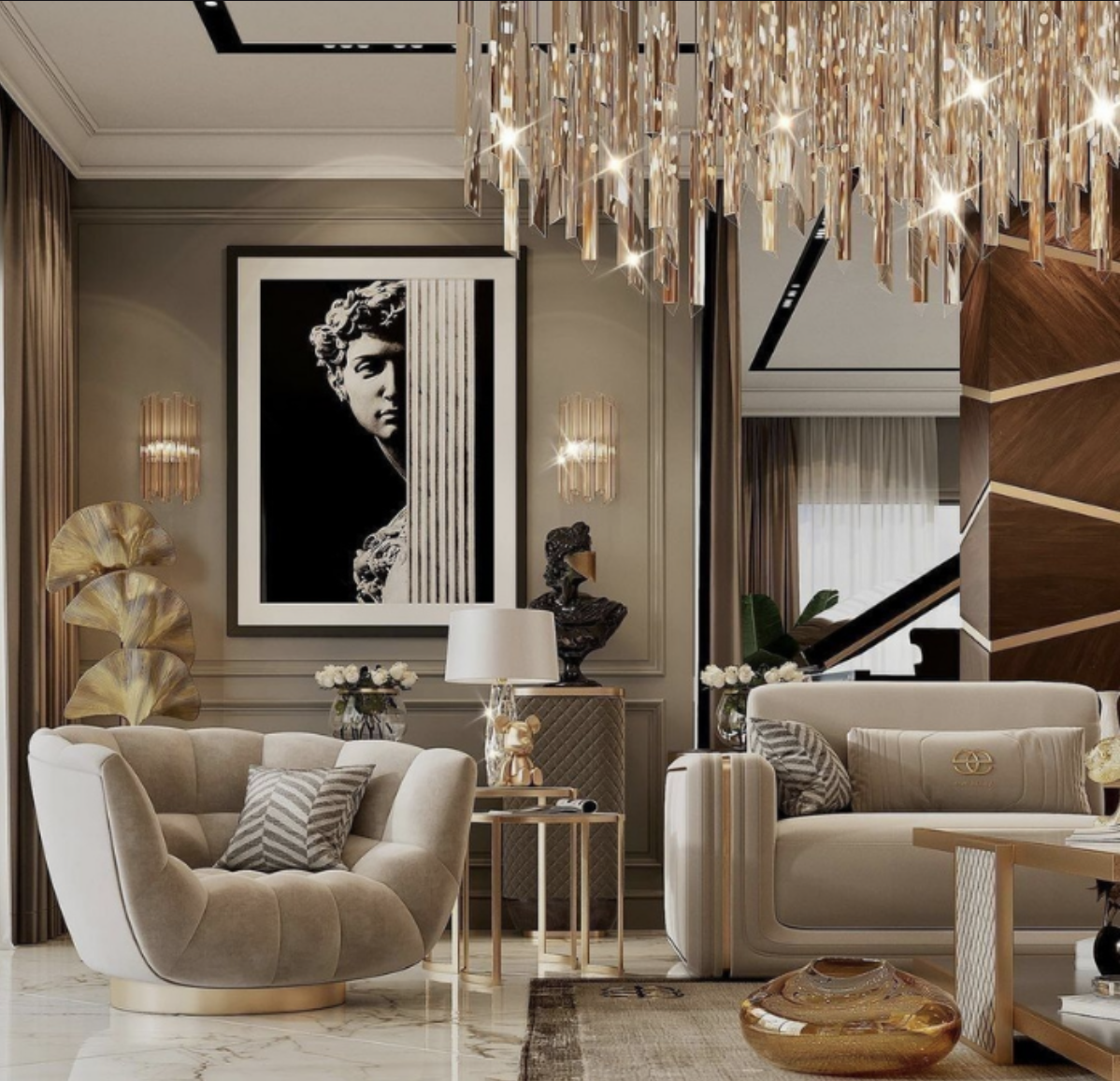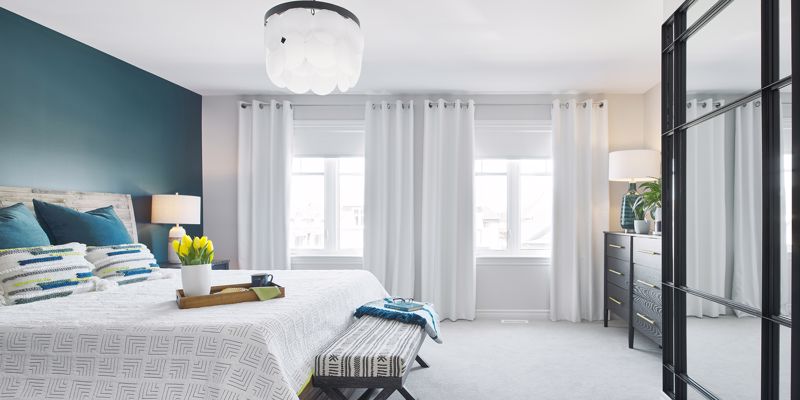With more people staying at home, even doing “staycations” instead of vacations, it seems like people are investing in their homes to make changes that create a more enjoyable environment in which to spend more time.
When discussing this with Decorating Den Interiors Director of Design Emeritus Carol Donayre Bugg, ASID, she reminded us of the term “cocooning,” popular in the 80s and 90s. Introduced by Faith Popcorn in 1981, she defined it in her book, The Popcorn Report, as “the impulse to go inside when it just gets too tough and scary outside. To pull a shell of safety around yourself, so you’re not at the mercy of a mean, unpredictable world…. Cocooning is about insulation and avoidance, peace and protection, coziness and control — a sort of hyper-nesting.”
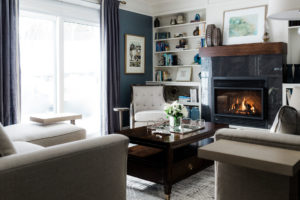
Popcorn’s prediction that cocooning would be a trend is exemplified in Bugg’s 2009 book Decorating: The Professional Touch, in which she wrote about “ways of making a serene haven of your home, designing spaces to restore body and soul, and creating a year-round paradise in your home.”
Popcorn has continued to keep cocooning present in the design community such as in 2015 when she introduced her “Cottage Cocoon” collection of home office furnishings. The Houston Chronicle proclaimed: “’Cocooning’ trend expands to include a cozy home office.” Popcorn aimed the collection especially “to appeal to the woman who works at home,” it reported.
In Bugg’s 2017 book, Love Your Home, she included a woman’s office that was described by the client as a “refuge”– not usually a term used to describe a workspace. That’s the point: To give a space an unexpected feel, a feel that relates personally to those who will use the space.
Like this aviation fan’s airplane riveted desk and matching chairs.
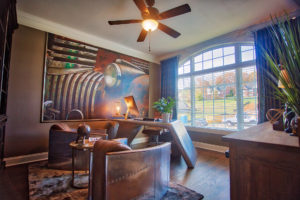
“Peace and protection, coziness and control”
“What we need now: 3 types of cocooning” declared PsychologyToday.com in March, adding: “Even before coronavirus quarantines, hyper-nesting had been on the rise.” The article suggests three types of cocooning that bring “peace and protection, coziness and control.”
“Curating your cocoon” involves starting with the room you care about the most. For example, “if it is the bedroom, they might, if they can afford it, indulge in luxury sheets and bedding. Cocooners also like to fill their favorite spaces with great aesthetics, such as artwork they adore or objects of their affection.” Be very inventive with your space.
Curating your time involves “looking forward to what they have planned for themselves. They have piles of books they’ve been wanting to read, projects they have been dying to get to, experiences they have been pining for. It requires getting good at using time alone constructively and joyfully.”
Cocooning is a state of mind involves transforming your time alone by altering your mindset. “Psychology is a mind game, and so is your life. You have a unique opportunity to do all those homey things you’ve been wanting to do all your life. That includes taking some time to do nothing at all.”
A touch of whimsy can help you change that mindset. The family names on the doors below and references to New Orleans’ French Quarter create unique space and puts one’s mind in different state.
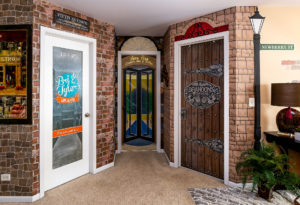
It’s all about Lifestyle
Mrs. Bugg introduced the term “Lifestyle Decorating” when she became Decorating Den Interiors’ Director of Design in 1984. This approach to decorating was amplified in the forward to her first of six books, 1994’s Devine Design.
That forward was written by the late, legendary Mario Buatta, consistently included in Architectural Digest’s yearly list of the Top 100 names in interior decoration, architecture, and landscape design. Buatta wrote:
“This is why I relate so well to Decorating Den and its philosophy of incorporating one’s lifestyle in decorating and design. For these are the true elements of making a house a home.
“Interior design is the creative medium by which homeowners/clients display their personalities. Each one of us wants to surround ourselves with a living environment that is reflective of our lifestyle. Unfortunately, many still carry the picture of decorators from days gone by. These decorators did not consider the client’s lifestyle when working on a project, only the end result, its grandeur and their egos. Decorating Den has broken this mold.
“As the result of the extravagant 1980s, the 1990s introduced us to the trend of ‘cocooning.’ Many of us are choosing to stay home for quality entertainment and family life. …Whether you seek the tranquility of cool serene hues or vibrant festive colors for a lively awakening décor, your home not only displays your personality, but also provides a nurturing cocoon.”
The difference between an average interior decorator and a GREAT interior decorator is the ability to design around a client’s lifestyle, budget and taste.
Whether you call it cocooning, sheltering-in-place or just creating more home enjoyment, we can help you get the result you desire.

